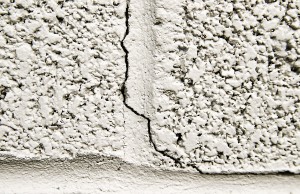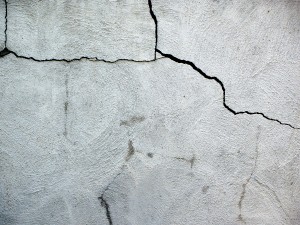 From Virginia to New Jersey, the northeast has seen its fair share of chaotic weather this winter. One snow is barely cleaned away before another arrives thanks to the Polar Vortex, and the latest storm – Pax – has brought cold and snow with it yet again. But while those in the northeast are focused on keeping a roof over their head and heat in their homes, it still pays to think about your basement. At AA Action Waterproofing we’ve seen flooded basements throughout the year – even during harsh winters like the one 2014 has become.
From Virginia to New Jersey, the northeast has seen its fair share of chaotic weather this winter. One snow is barely cleaned away before another arrives thanks to the Polar Vortex, and the latest storm – Pax – has brought cold and snow with it yet again. But while those in the northeast are focused on keeping a roof over their head and heat in their homes, it still pays to think about your basement. At AA Action Waterproofing we’ve seen flooded basements throughout the year – even during harsh winters like the one 2014 has become.
There are a couple of potential reasons that flooded basements may occur.
• Frozen, burst pipes could lead to a flooded basement. Thanks to insulation, it’s fairly rare, but could still be an issue that will lead to mold damage, water damage, and more.
• As the temperatures drop, water will freeze. If any moisture is in the foundation it could expand and cause larger cracks to occur. This will lead to serious problems in many homes.
• Thawing snow can trigger large amounts of water in a relatively short timespan. If that occurs, basements that seemed waterproof may suddenly begin to leak – especially if new cracks are added.
Flooded basements lead to major issues including mold growth, lost property, Continue reading →
 With the Polar Vortex having its way with the northeast, it’s hard to think about issues that seem to be summertime problems – things like mold growth or flooded basements, for example. But the fact is that even with the winter cold spreading across the country, from Virginia to New Jersey and beyond, flooded basements can still happen. And while things like burst water pipes may be to blame, basement flooding is often caused by foundation related issues. There are a few tips that can help you prevent flooded basements and avoid the issues that they may bring with them.
With the Polar Vortex having its way with the northeast, it’s hard to think about issues that seem to be summertime problems – things like mold growth or flooded basements, for example. But the fact is that even with the winter cold spreading across the country, from Virginia to New Jersey and beyond, flooded basements can still happen. And while things like burst water pipes may be to blame, basement flooding is often caused by foundation related issues. There are a few tips that can help you prevent flooded basements and avoid the issues that they may bring with them.
At AA Action Waterproofing, we believe in helping you understand everything you should know about keeping your basement dry. Here are the top 3 ways to prevent a flooded basement from occurring at your home:
1. Basement Waterproofing – You need to let a professional with experience take care of your basement waterproofing needs. This is important during the winter as well as during the summer months, and could have a big impact on keeping your basement dry.
2. Proper Grading – Avoid letting landscapers or excavators slope your property in a way that funnels water directly towards your basement or home. While waterproofing will keep almost all moisture out, it isn’t a great idea to direct water Continue reading →
 Your home is your castle, and this winter it’s likely been a fortress against the cold and the snow. The polar vortex and several winter storms have made it a challenging winter to live in the northeast, and areas from Virginia to New Jersey have dealt with a lot. And while staying warm, dry, and safe is important, you also need to make sure that your home is protected. Needing foundation repair is a serious expense that can come with a lot of additional headaches and hassles. Continue reading →
Your home is your castle, and this winter it’s likely been a fortress against the cold and the snow. The polar vortex and several winter storms have made it a challenging winter to live in the northeast, and areas from Virginia to New Jersey have dealt with a lot. And while staying warm, dry, and safe is important, you also need to make sure that your home is protected. Needing foundation repair is a serious expense that can come with a lot of additional headaches and hassles. Continue reading →
 Your home requires regular maintenance to keep it in good shape, and there are lots of different things to think about. With the polar vortex keeping Virginia, DC, Pennsylvania, Maryland, New Jersey, Delaware, and pretty much the entire northeast in a deep freeze, it’s hard to think about things beyond heat, shelter, and safety. But your home is only as strong as its foundation, and the winter can put your foundation under some very severe stress.
Your home requires regular maintenance to keep it in good shape, and there are lots of different things to think about. With the polar vortex keeping Virginia, DC, Pennsylvania, Maryland, New Jersey, Delaware, and pretty much the entire northeast in a deep freeze, it’s hard to think about things beyond heat, shelter, and safety. But your home is only as strong as its foundation, and the winter can put your foundation under some very severe stress.
Leaking foundations and basement problems don’t usually show up as huge waterfalls pouring through the walls. Instead, they’re much more subtle – but no less important to take care of. There are a few signs you can look for that could help you determine whether or not you are having water leakage and foundation problems. If so, foundation repair may be needed. Here are a few things to look for.
• Dark Spots – If your basement is unfinished, you likely have concrete or block walls. Look for areas where the concrete is darker. It may not even feel wet to the touch, but those dark areas could be moisture within the material.
• Damp, Musty Smell – Your nose can tell you a lot, too. A dank, musky smell can be a sign that moisture buildup is occurring in your home. Continue reading →
 The foundation of your home is buried. You can see the foundation by going into the basement and looking at the concrete walls from the inside, but it still doesn’t give you a clear view of the whole foundation. The concrete in foundations, especially foundations found in older homes, can crack under the immense pressure of the building and the ground around it. Cracked foundations can cause all sorts of the problems that you may not have thought were due to a compromised foundation. If you find too many of these foundational problem symptoms, then you may want to call a professional to appraise the foundation of your home. Foundation repairs can save your home from a premature demise.
The foundation of your home is buried. You can see the foundation by going into the basement and looking at the concrete walls from the inside, but it still doesn’t give you a clear view of the whole foundation. The concrete in foundations, especially foundations found in older homes, can crack under the immense pressure of the building and the ground around it. Cracked foundations can cause all sorts of the problems that you may not have thought were due to a compromised foundation. If you find too many of these foundational problem symptoms, then you may want to call a professional to appraise the foundation of your home. Foundation repairs can save your home from a premature demise.
Symptoms of a faulty foundation:
• Doors that will not open or close smoothly or properly. With a shifting foundation, the house can settle which can bring down the door jams just a few millimeters. This will be enough to make opening a door difficult as it will drag on the round or not fit into the sill.
• Cracks on the walls near doors and windows. If the house settles quickly, then the walls will crack at weak spots near openings.
• Windows that become difficult to open or close. Much like the stuck door, the sill will move but Continue reading →
 Most people think that buildings are permanent. They believe that the home is just stuck in the ground and that is the way it is going to be forever. The fact of the matter is that a home is fluid and moving. You may have noticed some cracks in your walls from the house as it settles into the ground. Homes can settle for decades; creaking and cracking the entire time.
Most people think that buildings are permanent. They believe that the home is just stuck in the ground and that is the way it is going to be forever. The fact of the matter is that a home is fluid and moving. You may have noticed some cracks in your walls from the house as it settles into the ground. Homes can settle for decades; creaking and cracking the entire time.
In fact, the ground underneath the home is not stable. Soil constantly moves like a really slow motion wave in the water. It can take decades or centuries to actually see the movement, but the fact still remains – the ground underneath your feet and your home is constantly moving. This is especially true for wet soil with a lot of groundwater influence.
This is particularly bad news for one part of the home. The foundation is literally stuck into this slow motion wave and is susceptible to its whims, undertows and tidal waves. This means that the concrete slabs that make of the basement are being tossed around, day and night. This can obviously result in cracks and the degradation of the foundation.
A simple way to see if your foundation is under a lot of stress is to take a stroll around the house. If the earth Continue reading →
 Epoxy is nasty stuff. This industrial material smells bad, comes with a variety of different warning labels and needs to be used properly. You’ve probably seen epoxy at the hardware store and you may have even used it on different projects.
Epoxy is nasty stuff. This industrial material smells bad, comes with a variety of different warning labels and needs to be used properly. You’ve probably seen epoxy at the hardware store and you may have even used it on different projects.
Toy modeling enthusiasts mix a mild epoxy to glue their models together. But the epoxy used for to repair your home’s foundation is the real deal. If used properly, it can stop leaky basement walls, keep the foundation intact and prevent future flooding.
The Product
Epoxy comes as two separate materials. You’ll see two tubes sitting in a package side-by-side. One of the tubes is the resin that flows into cracks easily. The other tube is the hardener, which hardens the resin in a short period of time. But the hardener will only harden when in contact with the resin. Until then, it is just a toxic industrial liquid.
Precautions
Anyone who has used epoxy knows that it smells terrible. But the smell is only half the worry. What you are inhaling is actually toxic, so it is a good idea to be in a well-ventilated area. You can use a painter’s mask or breathing mask as well. Rubber gloves can prevent the epoxy fusing to your skin, which comes with a very uncomfortable removal process. Protective eyewear Continue reading →
 While there is no real way to put a price on your time, it is still valuable nonetheless. But there is a way to put a price tag on the expenses that arise from flooded basements. And while the expenses are real and often steep, a flooded basement will also cost you a ton in time. If this is the first time you’ve dealt with flooding, there’s a good chance you’ll work really hard to salvage certain things to no avail.
While there is no real way to put a price on your time, it is still valuable nonetheless. But there is a way to put a price tag on the expenses that arise from flooded basements. And while the expenses are real and often steep, a flooded basement will also cost you a ton in time. If this is the first time you’ve dealt with flooding, there’s a good chance you’ll work really hard to salvage certain things to no avail.
The first thing that most people want to do when they see a basement full of water is to try and salvage the area. Most people bust out the shop vacuum and dehumidifier, taking turns with their spouse and spending the whole weekend trying to get that basement dry. But by now the mold has already begun to set in. You won’t be able to see it in the carpet, but if you pick up a piece of furniture in the basement you likely see ominous mold setting in.
With groundwater, you want to try to evacuate the floodwaters within 24 hours. If you fail to meet that time period, then your whole basement will need to be gutted because the proliferation of mold has already gotten so out of control that it could become a safety hazard to Continue reading →
 Many DIY enthusiasts spend their weekends caulking bathroom tiles, insulating breezy basements, or weather stripping the house for winter, and all the while neglecting to check your foundation. The foundation is one of the most important parts of the home and its health is directly tied to the longevity of the house.
Many DIY enthusiasts spend their weekends caulking bathroom tiles, insulating breezy basements, or weather stripping the house for winter, and all the while neglecting to check your foundation. The foundation is one of the most important parts of the home and its health is directly tied to the longevity of the house.
From the day it was built, it begins settling. A massive amount of weight shifts every time a beam weakens, a bolt settles, or the foundation cracks. This natural aging can wreak havoc on your home. It is not immediately or obviously catastrophic, but it is slow, chronic and, oftentimes, goes unnoticed until it is too late.
Checking out the foundation is no easy task. You might have to get a bit dirty as you crawl around the house. The concrete on the outside of the house should be smooth. It may be a good idea to check just after a rainstorm because the small cracks fill with moisture and appear as dark spots on the wall. You can take picture to remember where you saw these little cracks.
Cracks can also exist on the inside. The groundwater can push through the dirt and into the subterranean parts of your basement wall. A flashlight can provide some intense light so that you can see the cracks clearly. Once Continue reading →
 Few scenarios are as disheartening as walking downstairs into your basement to start the laundry or work on a project, only to realize that the entire area is underwater. This can happen slowly over time, as water creeps in through cracks or drips in from a leaky pipe. Or the water can come in very quickly, due to a catastrophic flooding. Either way, no matter how it happened or how much or how little water is actually present, the truth remains: not only are you most definitely not getting anything done down there any time soon, but you are also going to need to have a plan to get this whole mess taken care of ASAP to minimize the damage.
Few scenarios are as disheartening as walking downstairs into your basement to start the laundry or work on a project, only to realize that the entire area is underwater. This can happen slowly over time, as water creeps in through cracks or drips in from a leaky pipe. Or the water can come in very quickly, due to a catastrophic flooding. Either way, no matter how it happened or how much or how little water is actually present, the truth remains: not only are you most definitely not getting anything done down there any time soon, but you are also going to need to have a plan to get this whole mess taken care of ASAP to minimize the damage.
Mold:
Water may be a purifying force of nature most of the time, but left in a wet basement, which is devoid of proper air circulation, it stagnates. This turns your basement into a veritable petri dish for nasty things you do not want anywhere near your home. This environment is the ideal growing condition for several strains of dangerous mold, mildew, and fungi that could put you and your family at risk.
This is especially true of the mold called Stachybotrys chartarum. Its distinctive black coloring makes it easy to identify, and it is extremely dangerous to both Continue reading →
 From Virginia to New Jersey, the northeast has seen its fair share of chaotic weather this winter. One snow is barely cleaned away before another arrives thanks to the Polar Vortex, and the latest storm – Pax – has brought cold and snow with it yet again. But while those in the northeast are focused on keeping a roof over their head and heat in their homes, it still pays to think about your basement. At AA Action Waterproofing we’ve seen flooded basements throughout the year – even during harsh winters like the one 2014 has become.
From Virginia to New Jersey, the northeast has seen its fair share of chaotic weather this winter. One snow is barely cleaned away before another arrives thanks to the Polar Vortex, and the latest storm – Pax – has brought cold and snow with it yet again. But while those in the northeast are focused on keeping a roof over their head and heat in their homes, it still pays to think about your basement. At AA Action Waterproofing we’ve seen flooded basements throughout the year – even during harsh winters like the one 2014 has become.








